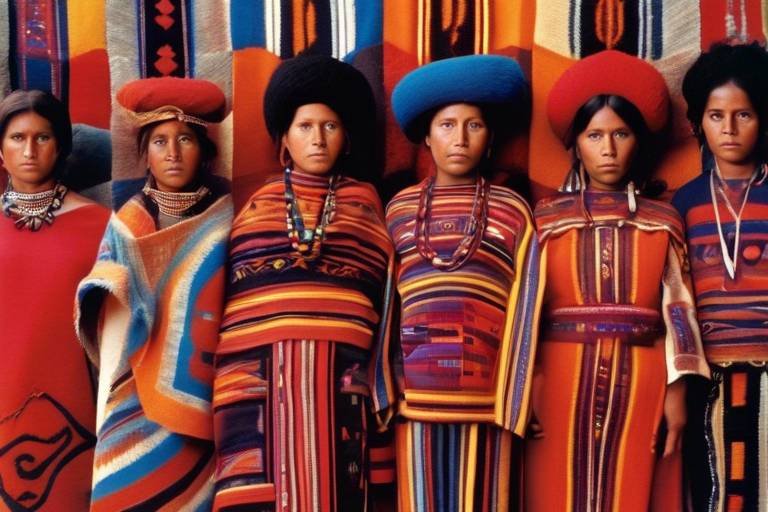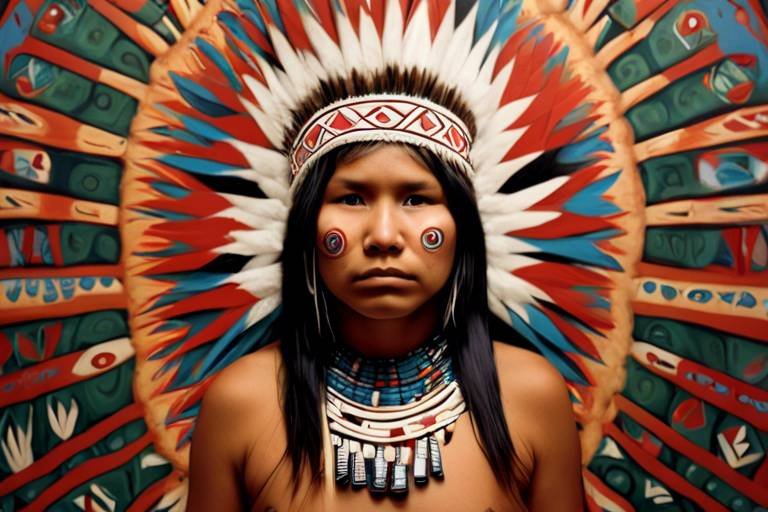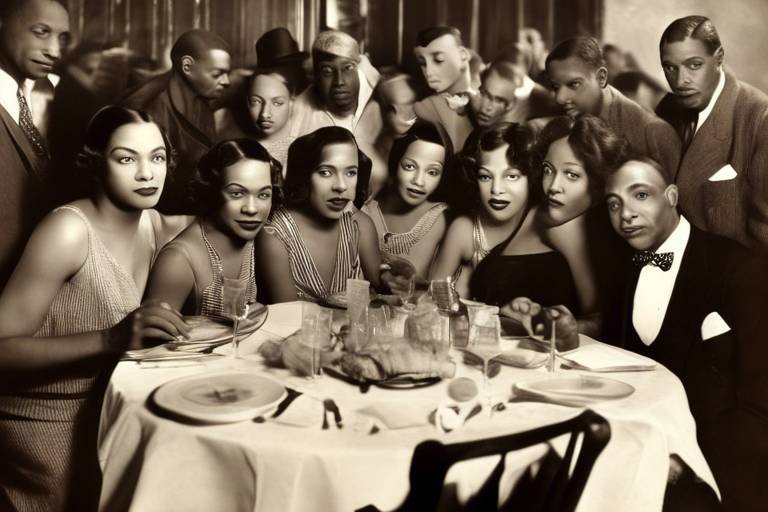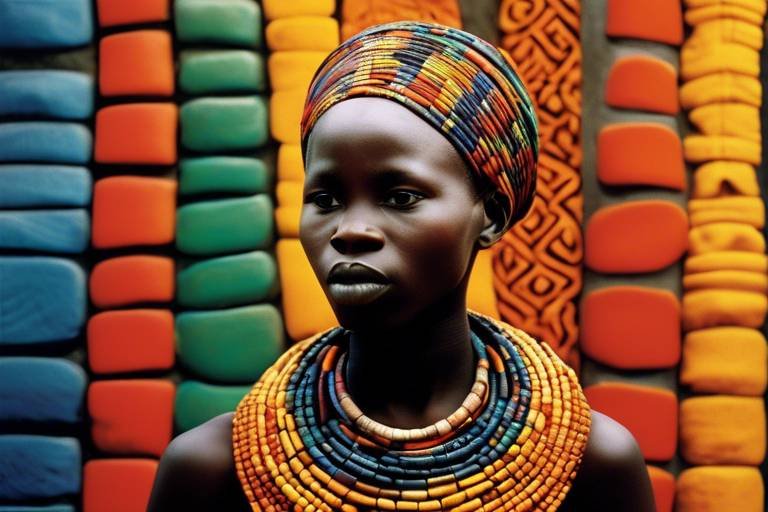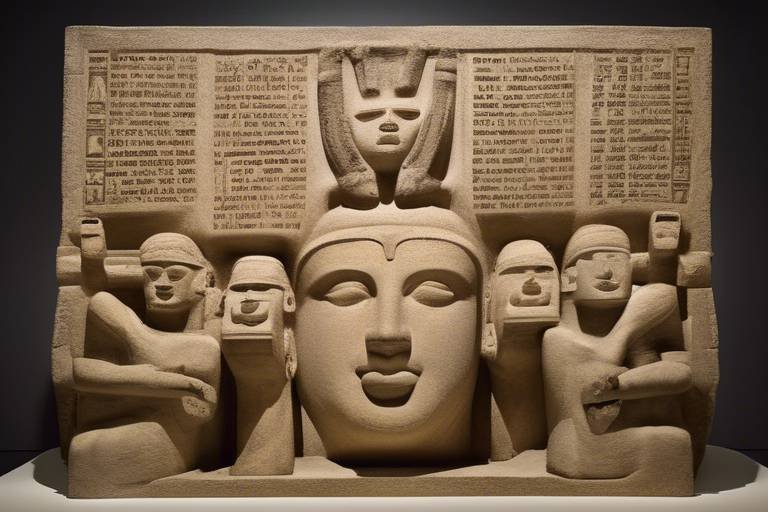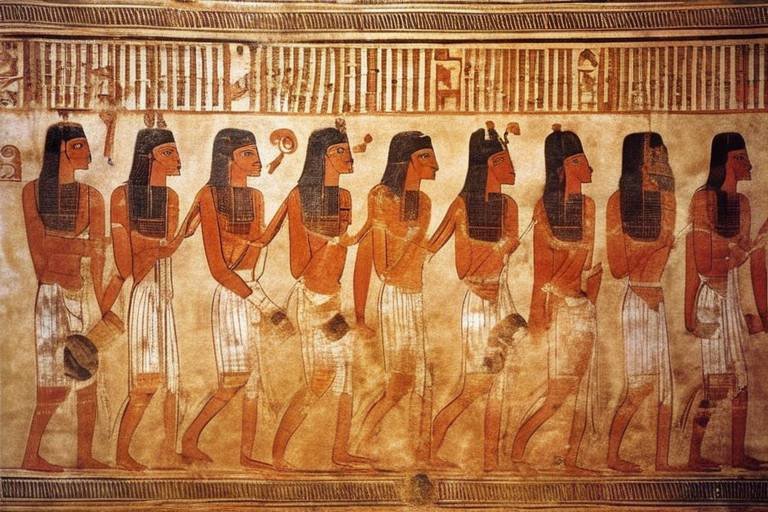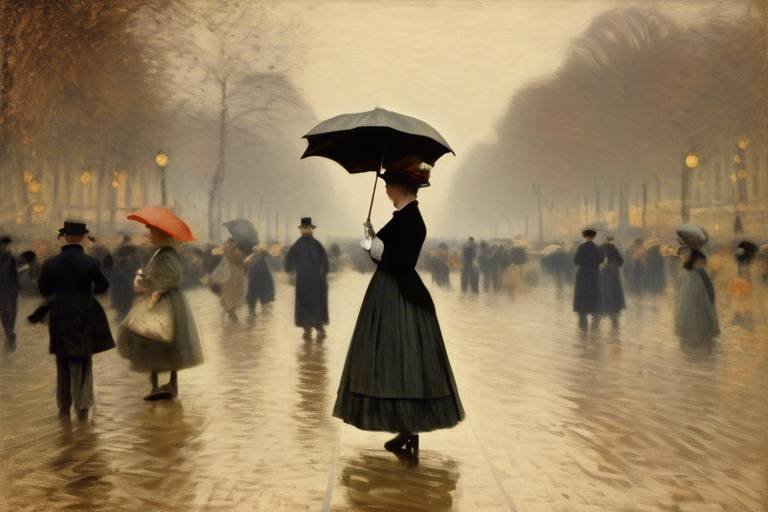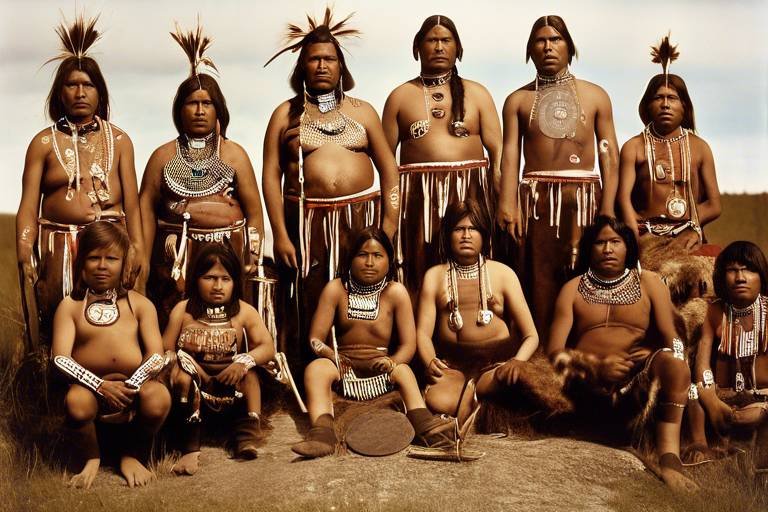The Use of Textiles in South American Cultures
The use of textiles in South American cultures dates back centuries and holds a profound significance in the rich tapestry of traditions and beliefs across the continent. From the vibrant patterns of the Andean mountains to the intricate weavings of the Amazon rainforest, textiles play a vital role in expressing cultural identity and preserving ancient practices.
Traditional weaving techniques in South American cultures are a testament to the skill and artistry of indigenous communities. Through the use of backstrap looms, artisans meticulously craft textiles using natural fibers such as alpaca wool and cotton, creating intricate designs that reflect the beauty of the natural world.
Symbolism in textile patterns further enhances the cultural depth of South American textiles. Geometric shapes symbolize cosmic elements, while animals embody spiritual beliefs, creating a visual language that speaks to the interconnectedness of the physical and spiritual realms.
The Chakana Cross motif, prevalent in Andean textiles, serves as a powerful symbol of balance and harmony, bridging the gap between the earthly and spiritual realms. Similarly, the Inca tradition of quipu, a system of knotted cords used for communication, influences textile patterns, infusing them with historical significance.
Textiles in South American rituals and ceremonies hold a sacred place in indigenous traditions. From shamanic practices to weddings and festivals, textiles are used to symbolize cultural identity and spiritual protection, weaving together the past and present in a colorful tapestry of heritage.
The Aymara people of Bolivia engage in intricate textile rituals related to agriculture, fertility, and spiritual protection, showcasing the profound connection between textiles and cultural practices. Similarly, the Mapuche people of Chile and Argentina are known for their vibrant weaving techniques and use of natural dyes, preserving their cultural heritage through textile art.
In the modern era, there has been a revival of traditional textile art in South American cultures, blending ancient techniques with contemporary designs to promote sustainability and preserve cultural heritage. Artisans are embracing their roots while innovating new ways to showcase the beauty and significance of textiles in a rapidly changing world.

Traditional Weaving Techniques
Traditional weaving techniques in South American cultures are deeply rooted in history and tradition, showcasing the intricate skills and methods passed down through generations. One of the most prominent tools used in traditional weaving is the backstrap loom, a simple yet effective device that allows weavers to create complex patterns with precision. This method of weaving requires a high level of skill and attention to detail, as the weaver must manually adjust the tension of the threads to create the desired design.
Natural fibers such as alpaca wool and cotton are commonly used in traditional South American textiles, known for their durability and softness. The use of these natural materials not only adds to the quality of the textile but also reflects the connection to the land and environment from which they are sourced. Weavers often take great care in selecting and preparing these fibers, ensuring that each piece is crafted with the utmost care and respect for the materials.
Additionally, the weaving process itself is a labor-intensive art form that requires patience and dedication. Weavers spend hours meticulously creating intricate patterns and designs, often drawing inspiration from nature, mythology, and cultural traditions. The result is a textile that not only serves a practical purpose but also tells a story, preserving the cultural heritage of South American societies.

Symbolism in Textile Patterns
Symbolism in Textile Patterns holds a deep significance in South American cultures, reflecting a rich tapestry of beliefs and traditions woven into every thread. The intricate patterns and designs found in textiles are not merely decorative but carry profound meanings that connect the fabric to the cultural identity of the people. Geometric shapes often represent cosmic elements, with circles symbolizing the sun and squares representing the earth. Animals featured in the patterns hold spiritual significance, such as the condor symbolizing the heavens and the puma representing strength and power.
One of the most iconic motifs found in South American textiles is the Chakana Cross, a symbol that bridges the earthly and spiritual realms. This cross, also known as the Andean Cross, embodies concepts of balance and harmony, reflecting the interconnectedness of all living beings. The intricate weaving of the Chakana Cross motif in textiles serves as a visual reminder of the unity between the physical and metaphysical worlds, guiding the wearer towards spiritual enlightenment.
Another fascinating tradition rooted in South American textiles is the Inca Quipu, a unique system of knotted cords used for record-keeping and communication. The intricate knots and patterns of the Quipu have influenced textile designs, with weavers incorporating similar knotting techniques into their creations. The Quipu tradition adds layers of meaning to textile patterns, infusing them with historical narratives and cultural significance.

Chakana Cross Motif
The holds a profound significance in Andean textiles, representing a complex interweaving of earthly and spiritual realms. This iconic symbol, also known as the Andean Cross or Inca Cross, is deeply rooted in Andean cosmology, embodying concepts of balance, harmony, and interconnectedness. The Chakana Cross consists of a square cross with arms of equal length, each pointing to one of the cardinal directions. Its symmetrical design reflects the Andean worldview, where the physical world intersects with the spiritual world in a harmonious equilibrium.
Symbolizing the three levels of existence – the lower, middle, and upper worlds – the Chakana Cross serves as a powerful emblem of cosmic order and unity. Each arm of the cross is associated with specific elements such as earth, water, air, and fire, representing the harmonious coexistence of these forces in the natural world. The central square symbolizes the concept of Pachamama, the Andean Earth Mother, while the steps or triangles along the edges signify the levels of consciousness and spiritual evolution.
In Andean culture, the Chakana Cross is not merely a decorative motif but a sacred symbol with deep spiritual significance. It is often incorporated into textiles, pottery, and architecture, serving as a visual expression of the Andean worldview and belief system. The intricate geometric patterns of the Chakana Cross reflect the interconnectedness of all living beings and the cyclical nature of existence, emphasizing the importance of balance and reciprocity in the cosmic order.

Inca Quipu Tradition
The Inca Quipu Tradition holds a significant place in the history of South American textiles. The Inca civilization developed a unique system of communication and record-keeping through the use of quipus, which were intricate arrangements of knotted cords. These quipus served as a method of encoding information, including numerical data, historical records, and even stories. The cords were made from natural fibers such as llama or alpaca wool, dyed in various colors for differentiation.
Each knot on the quipu held a specific meaning, and the arrangement of knots along the cords conveyed complex information. The Inca people, known for their advanced engineering and organizational skills, utilized quipus for various purposes, including tax collection, census data, and monitoring agricultural production. The quipus were essential in maintaining order and facilitating communication within the vast Inca empire.
Interestingly, the intricate knot patterns of the quipus also influenced the designs and patterns of textiles in South American cultures. The symbolic meanings embedded in the arrangement of knots were often reflected in the weaving techniques and patterns of textiles, creating a profound connection between the quipu tradition and textile art.

Textiles in Rituals and Ceremonies
Textiles have always held a special place in the rituals and ceremonies of South American cultures, serving as more than just fabric but as carriers of tradition, identity, and spirituality. The intricate weaving techniques and vibrant patterns of textiles play a crucial role in various ceremonial practices, infusing each moment with cultural significance and historical depth.
When delving into the realm of South American rituals and ceremonies, one cannot overlook the profound use of textiles in shamanic practices. Shamans, the spiritual leaders of many indigenous communities, often don intricately woven garments adorned with symbolic patterns during rituals to connect with the spiritual realm and harness the power of ancestral wisdom. These textiles act as a conduit between the physical and metaphysical worlds, embodying the essence of the ceremony itself.
Furthermore, textiles play a central role in South American weddings, where they symbolize not only the union of two individuals but also the merging of families and communities. In many cultures, the bride and groom wear traditional garments intricately embroidered with symbols of fertility, prosperity, and love, weaving together the past and present in a colorful tapestry of shared heritage.
During festivals and celebrations, textiles take on a life of their own, adorning dancers, musicians, and participants in a vibrant display of cultural pride and unity. The intricate patterns and designs found in festival attire often reflect the community's history, beliefs, and values, transforming each gathering into a living tapestry of shared stories and collective memory.
One fascinating aspect of textile rituals in South American cultures is the belief in the protective and spiritual properties of certain fabrics and patterns. Textiles are often used as talismans and amulets, believed to ward off evil spirits, bring luck, or channel the energy of the natural world. Through the careful selection of fibers, colors, and designs, individuals imbue their garments with personal meaning and spiritual power, creating a tangible connection to the unseen forces that shape their lives.
In conclusion, textiles in South American rituals and ceremonies are not merely decorative elements but powerful symbols of cultural heritage, spiritual beliefs, and communal identity. From shamanic practices to weddings and festivals, the intricate weaving techniques and symbolic patterns found in textiles serve as a bridge between the past and the present, weaving together the threads of tradition and innovation in a vibrant tapestry of living history.

Aymara Textile Rituals
The Aymara people of Bolivia have a deep-rooted connection to textiles, incorporating them into various rituals that hold significant cultural importance. Textiles are not merely fabrics to the Aymara; they are vessels of tradition and spirituality, carrying the stories and beliefs of their ancestors. In Aymara society, textile rituals are a way to honor their heritage and maintain a link to their past, ensuring that their customs are preserved for future generations.
One of the most notable textile rituals among the Aymara is the ceremony of Ch'alla, where textiles are used to offer blessings for the success of agricultural endeavors. During this ritual, intricately woven textiles are placed on the ground as offerings to Pachamama, the Earth Mother, seeking her favor and protection for the crops. The vibrant colors and symbolic patterns of the textiles are believed to communicate with the spiritual realm, invoking the blessings of the ancestors for a bountiful harvest.
Textiles also play a crucial role in Aymara ceremonies related to fertility and childbirth. Pregnant women are often adorned with special textiles woven with symbols of fertility and protection to ensure a safe delivery and the health of the newborn. These textiles are imbued with spiritual significance, believed to ward off evil spirits and bring blessings to the mother and child.
Furthermore, Aymara textiles are used in rituals aimed at spiritual protection and healing. Shamans, known as Yatiris, use specially crafted textiles in their ceremonies to cleanse negative energies and restore balance to the individual and the community. The intricate designs and colors of the textiles are believed to have healing properties, acting as conduits for spiritual energies to flow and bring about positive transformation.

Mapuche Textile Traditions
The Mapuche people in Chile and Argentina have a rich tradition of textile art that is deeply intertwined with their cultural identity and history. Renowned for their intricate weaving techniques and vibrant use of natural dyes, Mapuche textiles are not just pieces of fabric but embodiments of their ancestral stories and beliefs. Each textile pattern carries symbolic meanings that reflect the Mapuche worldview, with geometric shapes representing elements of nature and animals symbolizing spiritual connections.
Mapuche women are the primary weavers in the community, passing down their knowledge and skills from generation to generation. They use backstrap looms to create textiles that are not only visually stunning but also hold significant cultural value. The colors and patterns in Mapuche textiles are not chosen arbitrarily; they are carefully selected to convey specific messages and narratives, making each piece a work of art with a story to tell.
One of the most fascinating aspects of Mapuche textile traditions is the use of natural dyes sourced from plants, minerals, and insects found in their environment. These dyes produce a wide range of hues, from earthy browns and greens to vibrant reds and blues, adding depth and meaning to the intricate patterns woven into the fabric.
Mapuche textiles are more than just decorative items; they are a form of cultural expression and resistance against colonial influences. By preserving and promoting their traditional weaving techniques, the Mapuche people are not only keeping their heritage alive but also asserting their identity in a rapidly changing world. The intricate beauty and cultural significance of Mapuche textiles continue to captivate admirers around the globe, showcasing the enduring legacy of this ancient art form.

Contemporary Revival of Textile Art
Within the vibrant tapestry of South American cultures, a contemporary revival of traditional textile art is taking place, blending the old with the new in a harmonious fusion of creativity and heritage. Artisans across the region are breathing new life into age-old weaving techniques, infusing them with modern designs to create pieces that resonate with both tradition and innovation.
These modern-day textile artists are not merely replicating the past but are reinterpreting it, adding their own unique flair and creativity to the intricate patterns and symbols that have been passed down through generations. By incorporating contemporary elements into their work, they are ensuring that the rich tapestry of South American textile art continues to evolve and thrive in the present day.
One of the key aspects of this revival is the emphasis on sustainability and ethical practices. Artisans are increasingly turning to natural dyes and fibers, sourced locally and produced in an environmentally friendly manner. This commitment to sustainability not only honors the traditions of the past but also ensures a more sustainable future for textile art in South America.
Furthermore, the revival of textile art is not just about creating beautiful pieces; it is also about preserving cultural heritage and fostering a sense of community. By celebrating and promoting traditional weaving techniques, artisans are keeping ancient skills alive and passing them on to future generations. In doing so, they are creating a legacy that goes beyond the threads and fibers, weaving together stories, traditions, and identities.
Frequently Asked Questions
- What are some traditional weaving techniques used in South American cultures?
In South American cultures, traditional weaving techniques often involve the use of backstrap looms and natural fibers such as alpaca wool and cotton. These methods have been passed down through generations and are integral to the cultural identity of many indigenous communities.
- What is the symbolism behind textile patterns in South American textiles?
The intricate patterns and designs found in South American textiles often carry symbolic meanings. For example, geometric shapes may represent cosmic elements, while animals can symbolize spiritual beliefs. These patterns serve as a visual language, conveying cultural stories and beliefs through textile art.
- How are textiles used in rituals and ceremonies in South American cultures?
Textiles play a significant role in various rituals and ceremonies in South American cultures. They are used in shamanic practices, weddings, and festivals to symbolize cultural identity and spiritual connections. Textiles are also central to ceremonies related to agriculture, fertility, and protection in indigenous communities.

